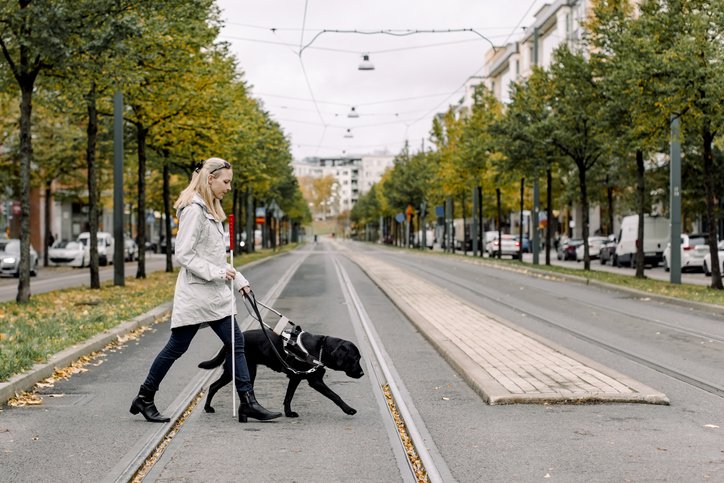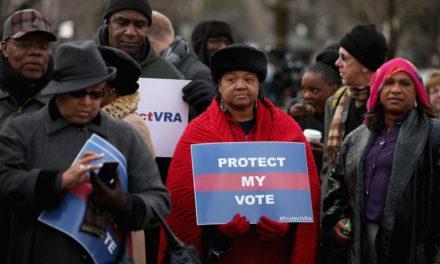
It started out like any typical day. I took Lyft to my gym. After my workout, I requested another Lyft for my return trip. I take Lyft because I am blind and can’t drive, and I also have a Seeing Eye dog who is probably the sweetest thing ever; I haven’t ever even heard her bark.
Most ride share drivers realize that — not only by company policy but also by law — they take a service dog no matter what, and they usually are willing to accept my dog. However, this time my ride home was different. “Hold your leash tightly,” the driver told me. “I am scared of dogs.”
I did as he asked, but after he dropped me off, I realized that he gave me a really low rating. We didn’t have any conflicts or tension during the ride, so his rating — which all drivers can see — effectively punished me for needing to have my service dog with me.
It might be possible that this driver doesn’t understand what a service animal is. A service animal is specially trained to help with a disability you might have, whether your disability is visible or invisible. My service animal is a guide dog; she helps me identify objects in my pathway, curbs, or entrances to businesses. She even helps me follow people in a crowded area.
The National Federation of the Blind (NFB), a nonprofit organization that advocates for disability rights, took Uber and Lyft to court in 2017 over how many blind guide-dog users were being denied by the drivers. In response, the companies created a one-strike policy stating that if they hear of a single complaint about a driver, the driver would be permanently removed from the platform. However, I have yet to see evidence of this policy in action.
Those of us in the service animal community often encounter resistance to our animals. Some of this may relate to how the general public perceives service animals today. In my experience, many people seem to be unaware that service animals are specially trained — as my dog is — to perform specific tasks. However, misinformation has people assuming they can just go to Amazon and buy a vest that says “service animal” — then, like magic, their pet is a service animal. Please understand: There is more to it than throwing a jacket on your pet.
Misinformation has people assuming they can just buy a vest that says 'service animal' — then, like magic, their pet is a service animal. Please understand: There is more to it. Share on XNFB is conducting a survey for service animal users to report their experiences, which cites common excuses drivers use to avoid serving people like me. I’m allergic. I’m afraid. Your dog will shed; what if my next passenger is allergic? Do you have a sheet or blanket to cover the seat? Drivers have complained to me about having to wash the car after my ride (which they must do regularly anyway) or claimed that their car is a rental. Ride shares and public transit are how I get around the city. When I am denied a ride because of my service dog, the driver needs to realize they have started a domino effect; this will cause me to be late to my next thing.
Illegitimate service animals cause those of us with a genuine need to be discriminated against by business owners of all kinds, not just ride share drivers. (In 2018, more than 20 states instituted laws targeting those who falsely claim their pets as service or support animals.) After my college graduation this past June, my family went to a restaurant to celebrate. The hostess asked me where my dog’s vest was. According to the Americans with Disabilities Act (ADA), service animals do not need to wear any specific type of identifying gear. But fake service animals make it harder for legitimate service animals to function as intended. Also, when dogs that aren’t properly trained service animals bark at, or even try to attack our service dogs, this can be traumatizing to us and our animals.
Fake service animals make it harder for legitimate service animals to function as intended. When dogs that aren’t trained service animals bark at our service dogs, this can be traumatizing to us and our animals. Share on XI’ve tended to prefer Lyft over Uber because Lyft has had lower prices and more accommodating drivers, but that has changed. I figured that receiving one low rating was a one-time thing and no big deal, until my next Lyft driver questioned whether my dog was really a service animal because she doesn’t wear a vest. I received another low rating after that ride, and then an email from Lyft suspending me for five days for not following proper protocol. My emails to Lyft customer service were fruitless because driver feedback about customers is anonymous.
So, now I am left wondering if I — and people like me — are just SOL when relying on ride shares. People with conditions like mine have a difficult enough time navigating everyday life without also dealing with illegitimate service animals (and their owners) or ride share drivers who don’t have to follow their companies’ own policies. We’re the ones with the most genuine need for this help; too often we’re just being kicked to the curb.
People with conditions like mine have a difficult enough time navigating everyday life without also dealing with illegitimate service animals or ride share drivers who don’t have to follow their companies’ own policies. Share on X


















Great read. There definitely needs to be more awareness because, if not, situations like ride-sharing mishaps are the direct cause.